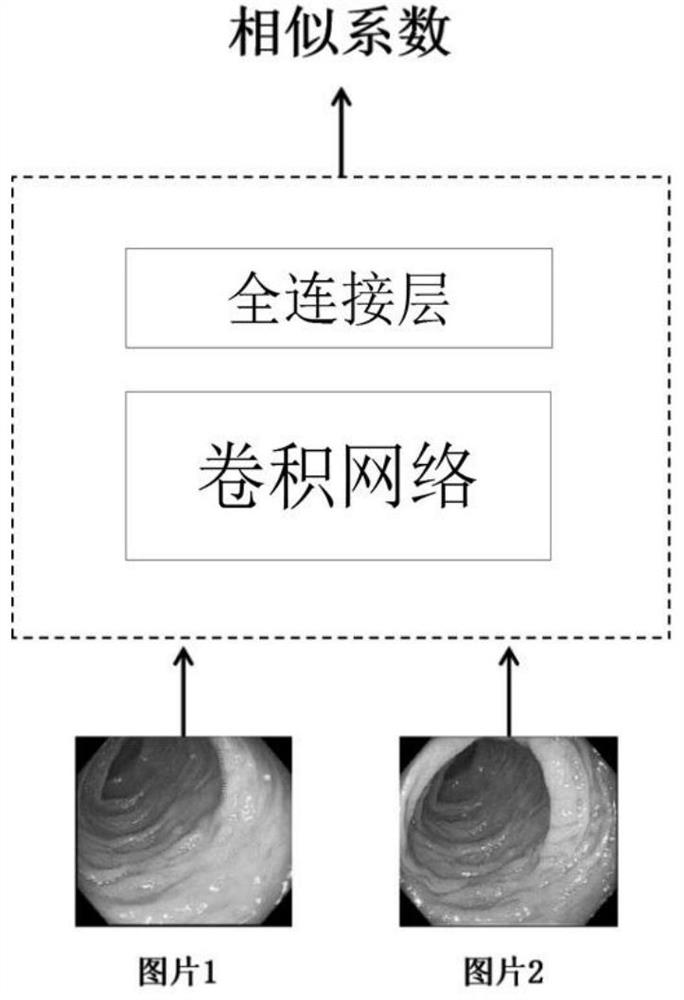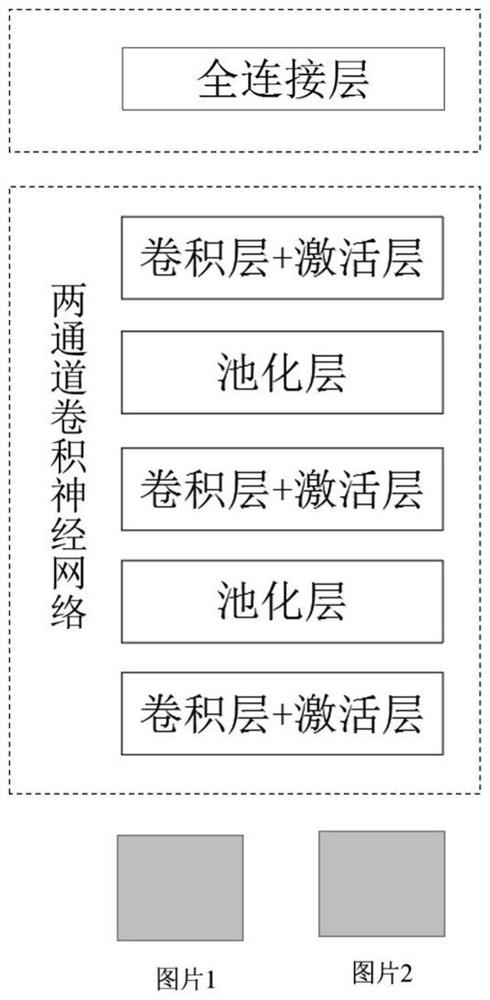Enteroscope withdrawal overspeed proportion monitoring method based on two-channel convolutional neural network
A convolutional neural network and colonoscopy technology, applied in the field of medical assistance, can solve the problems of multiple image information, low accuracy, loss, etc., and achieve the effects of strong anti-interference ability, good quality monitoring, and high accuracy
- Summary
- Abstract
- Description
- Claims
- Application Information
AI Technical Summary
Problems solved by technology
Method used
Image
Examples
Embodiment 1
[0033] S1. Collect 300 consecutive pictures of different colonoscopic examinations, including 150 cases of two different types of endoscopes. The pictures of each case need to include the rectum, sigmoid colon, descending colon, transverse colon, ascending colon, etc. Pictures of the parts.
[0034] S2. Clean up the collected picture set, and remove unqualified pictures such as fuzzy, incorrect parts, in vitro, and incorrect resolution in the picture set. The cleaned data set is marked by a professional doctor, and every two pictures form a pair. The label of the two pictures with a high degree of similarity is set to 1, and the label of the two pictures is completely different is set to 0. After manual labeling, the training set samples are composed.
[0035] Construct a two-channel convolutional neural network and train it with the training sample set to obtain the model 1 for calculating image similarity. The open source TensorFlow deep learning framework is used to const...
Embodiment 2
[0049] Compared with Embodiment 1, step S2 is optimized and described in detail, and the specific distinguishing techniques are as follows:
[0050] S in step S2 i It is the value of whether the two images are similar after being calculated by the trained model 1, and its range is 0-1, that is, S i =ConvNet(I i , I i-1 ), where I i and I i-1 are two adjacent images.
[0051] Obtain the real-time video of the colonoscopy examination through the endoscopy equipment, parse the video stream into pictures, and capture the pictures at a rate of 10 frames per second, and cache the current frame I 0 Colonoscopy picture I with the previous 9 frames i (where i=1...9).
[0052] the current frame I 0 Colonoscopy picture I with the previous 9 frames i (where i=1...9), form 9 pairs of images, and send them into the two-channel convolutional neural network, and each group of pictures is obtained after the model 1 trained in S3 to obtain the similarity coefficient S of the group of p...
Embodiment 3
[0055] Compared with Embodiment 2, step S3 is optimized and specifically described, and the specific differentiating techniques are as follows:
[0056] In step S3, by analyzing 50 sections of standard colonoscopy videos with withdrawal time>6min, 50 sections with withdrawal time of 4-6min standard colonoscopy videos, and 50 poor-quality colonoscopy videos with withdrawal timebase The value is 40. The current t time point colonoscopy examination speed V t Speed greater than the standard speed V base Recorded as overspeed frame, count up to the current time, the ratio of overspeed frame number to the whole frame number, which is the current overspeed ratio, p is the proportion of overspeeding, PV is the number of overspeeding frames, and PA is the whole number of frames.
[0057] After the colonoscopy examination is completed, the speeding ratio p of the colonoscopy examination is calculated, and converted into the evaluation score of the colonoscopy examination score = 10...
PUM
 Login to View More
Login to View More Abstract
Description
Claims
Application Information
 Login to View More
Login to View More - R&D Engineer
- R&D Manager
- IP Professional
- Industry Leading Data Capabilities
- Powerful AI technology
- Patent DNA Extraction
Browse by: Latest US Patents, China's latest patents, Technical Efficacy Thesaurus, Application Domain, Technology Topic, Popular Technical Reports.
© 2024 PatSnap. All rights reserved.Legal|Privacy policy|Modern Slavery Act Transparency Statement|Sitemap|About US| Contact US: help@patsnap.com










